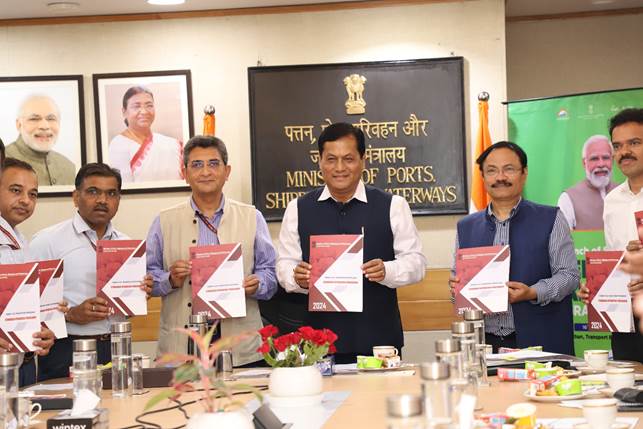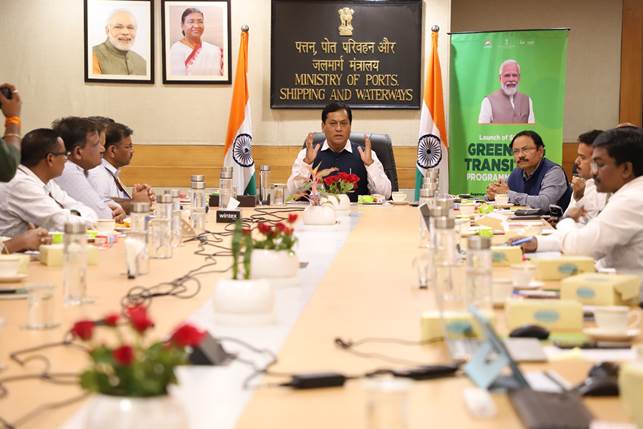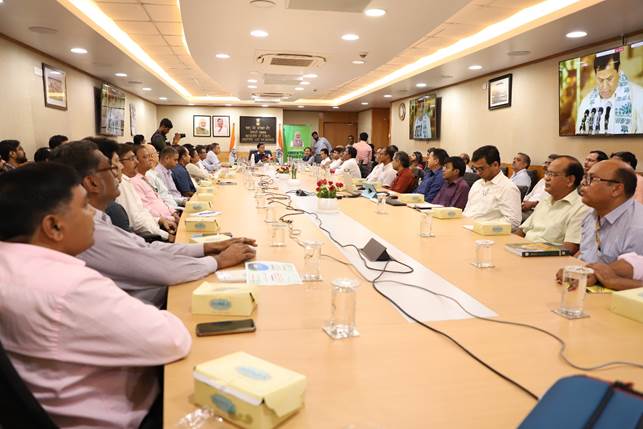India’s Maritime Sector Sets Sail for a Greener Future
In a groundbreaking move towards environmental sustainability, the Union Minister of Port Shipping and Waterways, Sarbananda Sonowal, has officially launched the Standard Operating Procedures (SOP) for the Green Tug Transition Program (GTTP). This ambitious initiative promises to revolutionize India’s maritime industry by phasing out diesel-powered tugs and replacing them with zero-emission green tugs, marking a pivotal moment in the nation’s journey towards a sustainable maritime sector.
A Green Wave in Maritime Operations
The Green Tug Transition Program, a cornerstone of the ‘Panch Karma Sankalp,’ was first announced by Sonowal during the ‘Chintan Shivir’ event on May 22, 2023. This program aims to replace conventional fuel-based harbour tugs at major Indian ports with innovative, eco-friendly alternatives. With Phase 1 of the GTTP set to commence on October 1, 2024, and run through December 31, 2027, the initiative will see significant investments in transforming port operations across the country.
The first phase will involve four major ports—Jawaharlal Nehru Port Authority, Deendayal Port Authority, Paradip Port Authority, and V.O. Chidambaranar Port Authority. Each port is set to procure or charter at least two green tugs based on standardized designs from the Standing Specification Committee (SSC). This monumental shift is projected to involve an investment of approximately INR 1000 Crores in building these cutting-edge tugs, which will initially include battery-electric models, with future adaptations to hybrid, methanol, and green hydrogen technologies.
Driving Innovation and Domestic Growth
Speaking at the launch event, Sonowal highlighted the program’s dual benefits: “The Green Tug Transition Program is a pivotal initiative towards realizing our vision of a sustainable and green maritime sector in India. This program not only aligns with our environmental goals but also strengthens our commitment to ‘Make in India,’ promoting domestic innovation and manufacturing in the maritime industry.”
The GTTP will serve as a significant boost to India’s domestic tug industry, with all tugs being built in Indian shipyards as part of the Government’s ‘Make in India’ initiative. This transition is expected to create numerous employment opportunities in shipbuilding and design, according to Shri TK Ramachandran, Secretary of MoPSW.
A Vision for the Future
Looking ahead, the GTTP is part of a broader vision outlined in the Maritime India Vision 2030 (MIV 2030), launched by Prime Minister Narendra Modi in 2020. This vision includes ambitious targets such as sourcing 60% of each major port’s power from renewable energy and achieving a 30% reduction in carbon emissions per ton of cargo by 2030. The Maritime Amrit Kaal Vision 2047, introduced in 2023, further specifies a 30% reduction in greenhouse gas emissions from port vessels by 2030. Harbor tugs, crucial for operations such as berthing and unberthing, are ideal candidates for green technologies, which will help cut emissions and enhance operational efficiency.
By 2040, the goal is for all tugs operating in Indian Major Ports to transition to green technologies, ensuring a standardized, eco-friendly fleet across the nation. Beyond 2033, any new tug built for Indian ports will need to comply with ASTDS-GTTP standards, reinforcing the commitment to sustainability.
A Cleaner, Greener Future
The GTTP exemplifies the Government’s dedication to sustainability and innovation in the maritime sector. It sets a new benchmark for global environmental responsibility in maritime operations, paving the way for a cleaner, greener future for India’s ports and beyond.







One thought on “Green Tug Transition Program (GTTP) Unveiled”